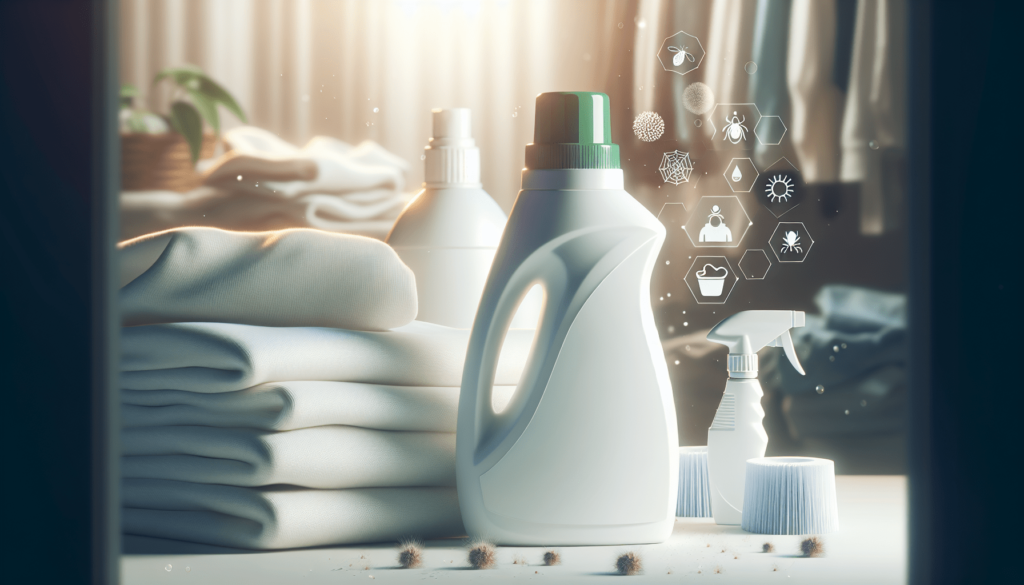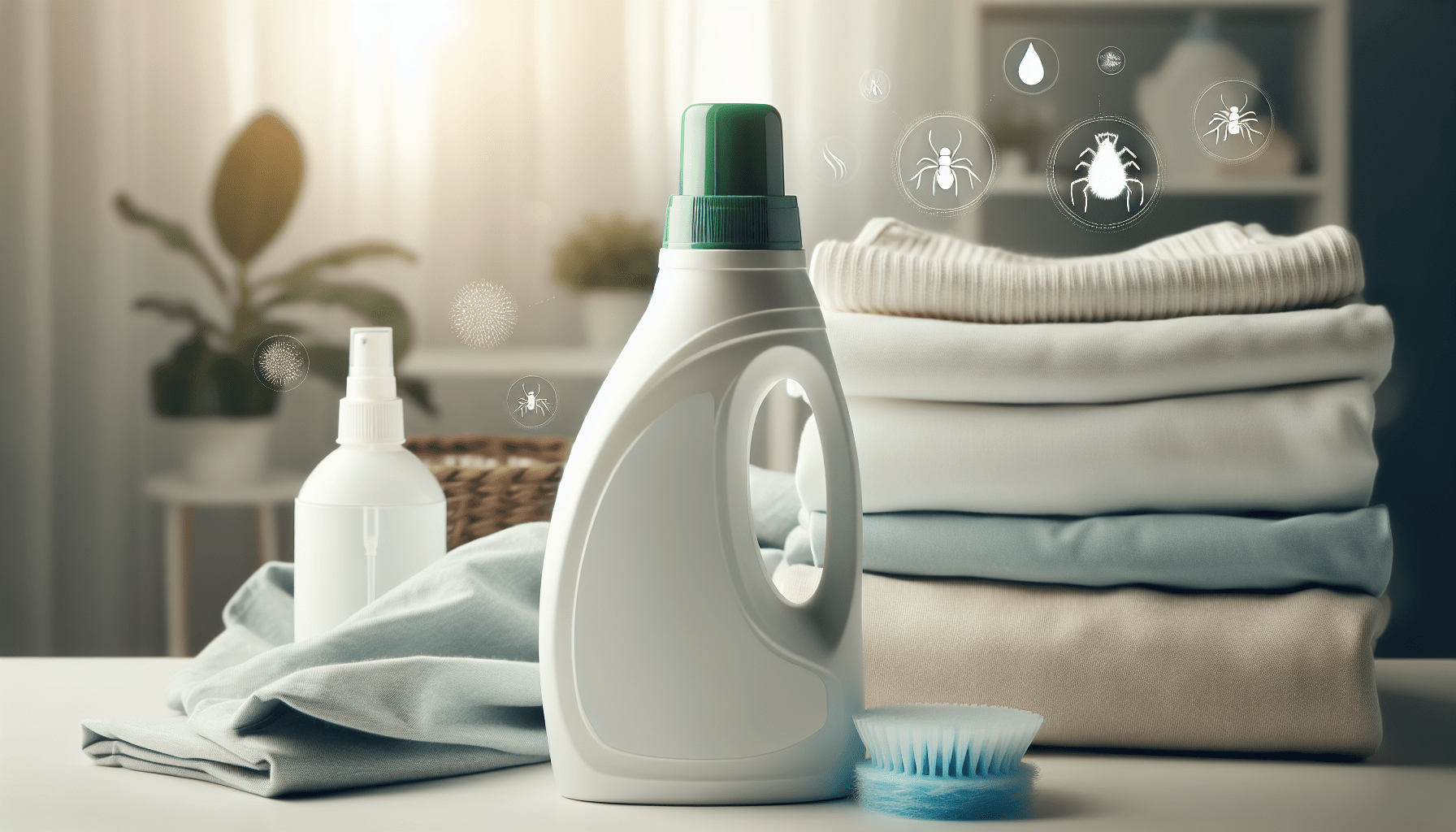Hey there! Navigating the world of laundry and cleaning products can be a bit tricky, especially when you find yourself dealing with unwanted allergens. “Common Allergens In Laundry And Cleaning Products” sheds light on the everyday substances that might be causing unexplained sneezes or skin irritations. You’ll gain insights into the usual suspects such as fragrances, dyes, and preservatives, and learn how to choose safer alternatives for your household. By the end, you’ll feel more prepared to create a cleaner, healthier environment for yourself and your loved ones. Have you ever started sneezing uncontrollably right after holding freshly washed clothes or experienced itching after using certain cleaning products? If so, you’re not alone. Many people are allergic to common ingredients found in laundry and cleaning products, and it can be a challenge to pinpoint exactly what’s causing these irritating symptoms.

Understanding Allergies
Allergies arise when your immune system reacts to a substance that is usually harmless. This substance is known as an allergen. The immune system releases chemicals like histamines to combat the allergen, leading to various symptoms such as sneezing, itching, or skin rashes.
Common Symptoms of Allergies
Being aware of the symptoms is essential for identifying potential allergens. Here’s a table outlining common symptoms:
| Symptom | Description |
|---|---|
| Sneezing | Frequent, involuntary sneezing, especially after exposure to certain products. |
| Itching | Red, itchy skin or eyes, occasionally spreading to other parts of the body. |
| Skin Rashes | Red, inflamed patches of skin, sometimes accompanied by blisters. |
| Coughing & Wheezing | Persistent coughing or wheezing, especially in asthmatic individuals. |
| Watery Eyes | Excessive tearing and irritation in the eyes. |
How Allergens Affect You
When exposed to allergens, symptoms can range from mild discomfort to severe reactions such as difficulty breathing. Understanding the sources of these allergens is the first step in managing and preventing allergic reactions.
Common Allergens in Laundry Products
Laundry products are designed to make your clothes clean and fresh, but they often contain ingredients that can be problematic for those with allergies.
Detergents
Most laundry detergents contain a mixture of synthetic fragrances, dyes, and surfactants. These chemicals can cause skin irritation and respiratory issues.
Synthetic Fragrances
Fragrances are added to make clothes smell good. However, synthetic fragrances can contain dozens of chemicals that are not listed individually on product labels, making it difficult to identify the allergenic component.
Dyes
Dyes are often used to give detergent its vibrant color. These dyes can cause skin irritation, especially for those with sensitive skin.
Surfactants
Surfactants are used to break down and remove dirt from clothes. While effective at cleaning, they can also strip natural oils from your skin, leading to dryness and irritation.
Fabric Softeners
Similar to detergents, fabric softeners contain fragrances and preservatives that can cause allergic reactions. The main culprits include:
Quaternary Ammonium Compounds
These are known to cause respiratory issues and skin irritations. They are used to make clothes feel soft and reduce static but can be harmful for those susceptible to allergies.
Preservatives
Preservatives like formaldehyde are used to prolong shelf life. Yet, they can cause skin rashes and respiratory issues in sensitive individuals.
Bleach
Bleach is a powerful cleaner but is also a strong irritant. The fumes can cause respiratory issues, and direct contact with skin can result in severe irritation or chemical burns.
Stain Removers
Stain removers often contain strong chemicals to deal with tough stains. Ingredients like enzymes and optical brighteners can cause allergic reactions, especially on sensitive skin.
Enzymes
Enzymes break down organic stains but can also cause respiratory and skin issues.
Optical Brighteners
These chemicals make garments appear whiter by reflecting light. They can cause skin irritation and phototoxic reactions when exposed to sunlight.
Common Allergens in Cleaning Products
Household cleaning products are another major source of allergens. These products are designed to clean and disinfect but often contain harsh chemicals.
All-purpose Cleaners
These versatile cleaners are formulated to handle various surfaces but can contain multiple allergens.
Ammonia
Ammonia is known for its strong odor and effectiveness at cutting grease. However, it can cause respiratory issues and skin irritation.
Phthalates
Phthalates are often used to stabilize fragrances. They are linked to allergic reactions and can disrupt endocrine function.
Bathroom Cleaners
Bathroom cleaners often contain strong chemicals to combat mold and mildew. These can be problematic for those with allergies.
Chlorine
Chlorine is effective at killing bacteria but can cause respiratory issues and skin irritation.
Sulfates
Sulfates are used for their cleaning power but can cause skin dryness and irritation.
Glass Cleaners
Glass cleaners are great for windows and mirrors but can pose allergic risks.
Isopropyl Alcohol
Isopropyl alcohol is commonly used in glass cleaners. While effective at eliminating smudges, it can cause respiratory issues and skin irritation.
Ethylene Glycol Monobutyl Ether
This chemical is used for its grease-cutting properties but can cause respiratory issues.
Floor Cleaners
Floor cleaners are designed for different surfaces and often contain strong chemicals.
Phenols
Phenols are effective at killing bacteria and fungi but can cause respiratory issues and skin irritation.
Identifying Allergens
Identifying which ingredients are causing your allergic reactions can be a challenge, but it’s crucial for effective management.
Reading Labels
One of the easiest ways to identify potential allergens is to read product labels carefully. Look for ingredients known to cause allergic reactions, such as synthetic fragrances, dyes, and preservatives.
Patch Testing
Conducting a patch test can help you determine if a product is causing an allergic reaction. Apply a small amount of the product to a small area of your skin and wait 24-48 hours to see if any reaction occurs.
Consulting with a Dermatologist
If you’re unsure which ingredients are causing your allergies, consult a dermatologist. They can conduct allergy tests to identify specific allergens and recommend suitable alternatives.

Preventing Allergic Reactions
Preventing allergic reactions involves more than just identifying allergens; it also requires taking proactive steps to minimize exposure.
Choosing Hypoallergenic Products
Opt for hypoallergenic products that are free from common allergens like synthetic fragrances, dyes, and preservatives.
Ventilating Your Home
Proper ventilation can help disperse fumes from cleaning products, reducing respiratory issues.
Wearing Protective Gear
When using cleaning products, wear gloves and masks to minimize direct exposure to allergens.
Using Natural Alternatives
Consider using natural cleaning alternatives like vinegar, baking soda, and essential oils, which are less likely to cause allergic reactions.
Conclusion
Understanding common allergens in laundry and cleaning products can significantly improve your quality of life. By identifying the sources of your allergies and taking proactive measures, you can reduce your symptoms and lead a more comfortable life. Always be diligent in reading labels, conduct patch tests when necessary, and consider consulting with healthcare professionals for personalized advice. Your health and well-being are worth the effort.
Cleaning your home and clothes should not come at the expense of your comfort or safety. By taking the right precautions, you can enjoy a clean and allergy-free environment.
